In the vibrant world of snakes, beauty and danger often go hand in hand. Venomous snakes, with their lethal capabilities, evoke a range of emotions from fear to fascination. Yet, amid the awe of their deadly prowess lies a stunning array of colors, patterns, and scales that make these creatures surprisingly beautiful. Whether it’s their mesmerizing colors, unique patterns, or the grace with which they move, venomous snakes captivate many who are willing to look past their fearsome reputation. Let’s explore some of these extraordinary creatures that are both dangerous and dazzling.
1. The Iridescent Blue Malayan Krait
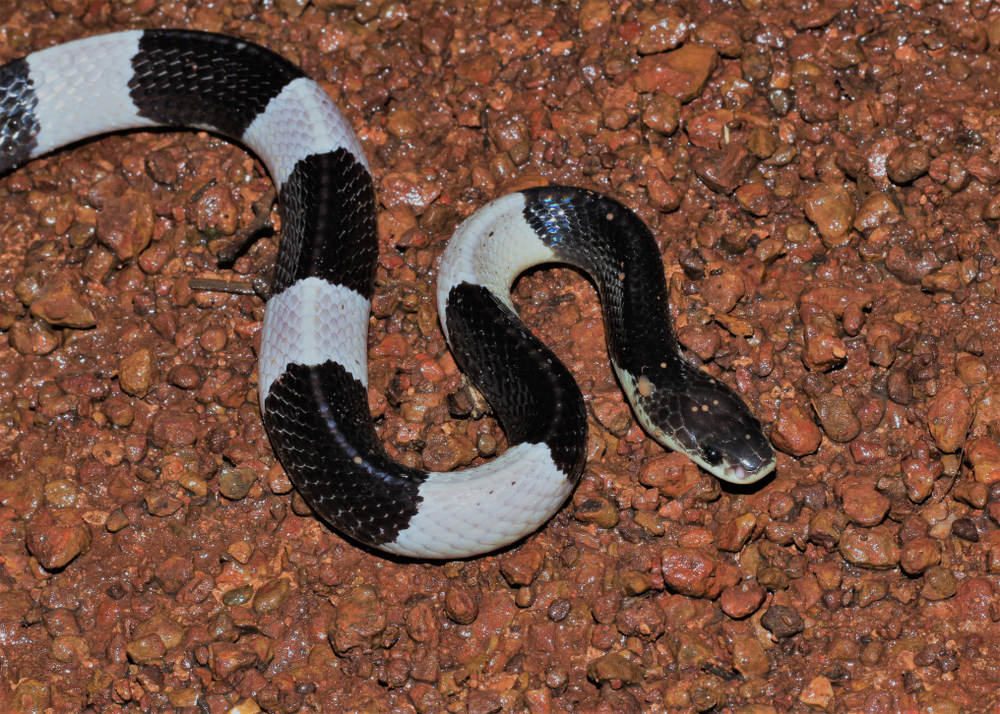
The Malayan Krait, often found slithering through Southeast Asia’s dense forests, is a sight to behold. Its sleek, glossy scales shimmer in a striking iridescent blue under sunlight, making it one of the most visually captivating snakes. However, this beauty is matched by its danger; it possesses a potent neurotoxic venom. Interestingly, the Krait is mostly nocturnal, emerging under the moonlight to hunt its prey, which consists mainly of other reptiles. According to National Geographic, it’s known for its docile daytime behavior, which is a stark contrast to its lethal nighttime persona. This duality adds an element of mystery and allure to the already fascinating creature.
Despite its deadly nature, the Malayan Krait is relatively shy and avoids human contact whenever possible. Its beautiful appearance often tempts adventurers to get a closer look, but it’s crucial to remember the danger it poses. Respecting its space and admiring its beauty from a safe distance is the best way to appreciate this spectacular serpent. In appreciating the Krait’s beauty, we are reminded of nature’s delicate balance between allure and peril.
2. The Radiant Gaboon Viper
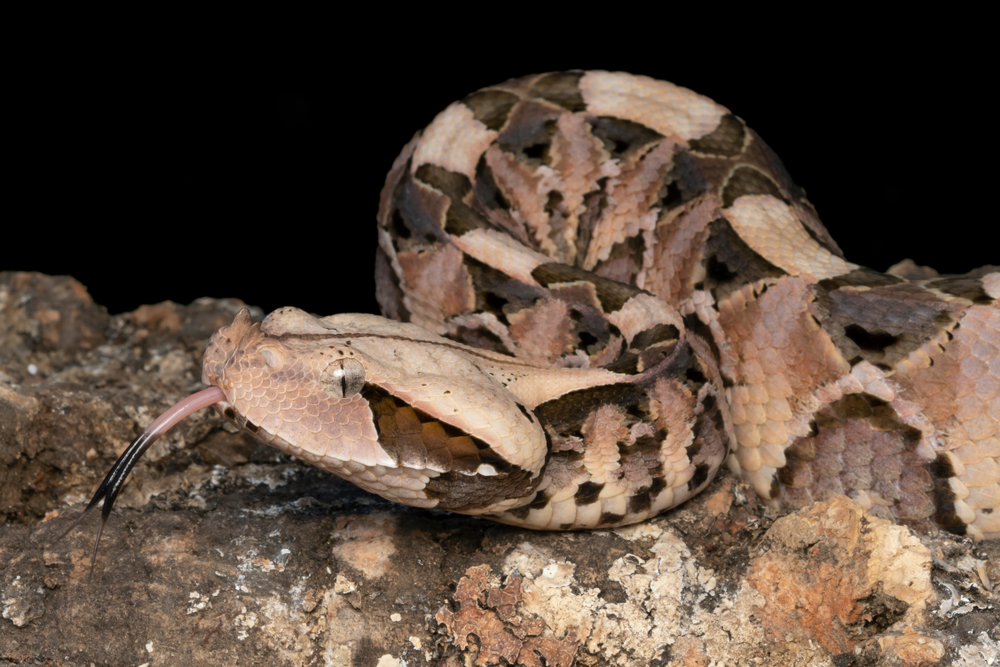
With colors that resemble a vibrant tapestry, the Gaboon Viper is a masterpiece of nature’s design. It boasts intricate patterns in shades of brown, pink, purple, and gold that provide excellent camouflage in its native African habitats. This snake is not just a visual delight but also holds the record for the longest fangs of any snake, reaching up to two inches. Its venom is potent, designed to swiftly incapacitate its prey. As per Smithsonian Magazine, the Gaboon Viper’s bite is a formidable weapon, capable of delivering a large dose of venom.
Despite its intimidating weaponry, the Gaboon Viper is generally a calm creature, seldom aggressive unless provoked. Its beauty is best appreciated in the wild, where it blends seamlessly into the forest floor. Observing this snake in its natural environment highlights the elegance of its evolutionary adaptations. The Gaboon Viper is a reminder that some of nature’s most beautiful creations come with a warning label.
3. The Dazzling Coral Snake
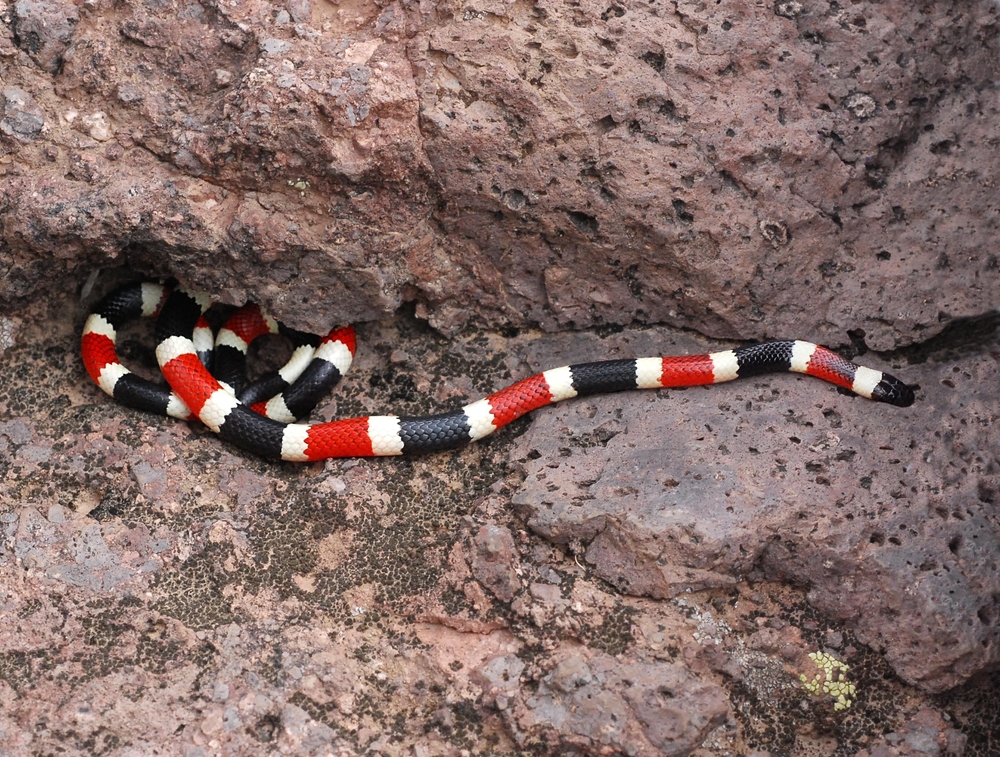
The Coral Snake, with its vibrant bands of red, yellow, and black, is an unmistakable sight in the Americas. Its striking appearance is a classic example of aposematic coloration, which serves as a warning to predators of its venomous nature. The rhyme “red on yellow, kill a fellow; red on black, friend of Jack” is often used to distinguish the venomous Coral Snake from its non-venomous lookalikes. According to the University of Florida’s IFAS Extension, this small but potent snake has a neurotoxic venom that requires immediate medical attention if bitten.
Despite its potential danger, the Coral Snake is reclusive, preferring to hide under leaf litter and debris. It is mainly active during the day, adding a burst of color to its otherwise muted surroundings. Observing a Coral Snake in the wild is like finding a hidden gem, a reminder of the vibrant intricacies of the natural world. While beautiful, its presence is also a call for caution and respect for the power it holds.
4. The Striking King Cobra
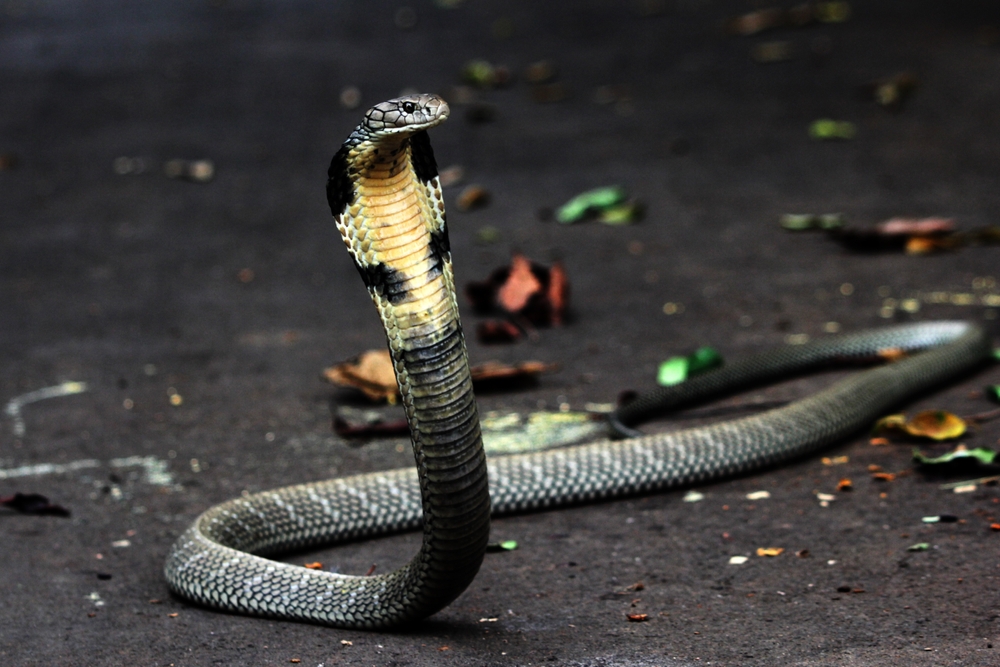
The King Cobra, revered and feared in equal measure, is the longest venomous snake in the world. Its impressive length can reach up to 18 feet, and its hooded appearance adds to its regal presence. The cobra’s scales are smooth and beautifully patterned in olive, tan, or black, making it a fascinating spectacle. This snake is not just a visual marvel but also an auditory one, with its distinctive hiss capable of striking fear into the hearts of those who hear it.
The King Cobra’s beauty is underscored by its intelligence and complex behavior. It is one of the few snakes that build nests for their eggs, showcasing a level of parental care uncommon in reptiles. Despite its fearsome appearance, the King Cobra is typically cautious and avoids human encounters. Observing this magnificent creature from a safe distance allows us to appreciate its striking beauty and the unique role it plays in its ecosystem.
5. The Elegant Bush Viper
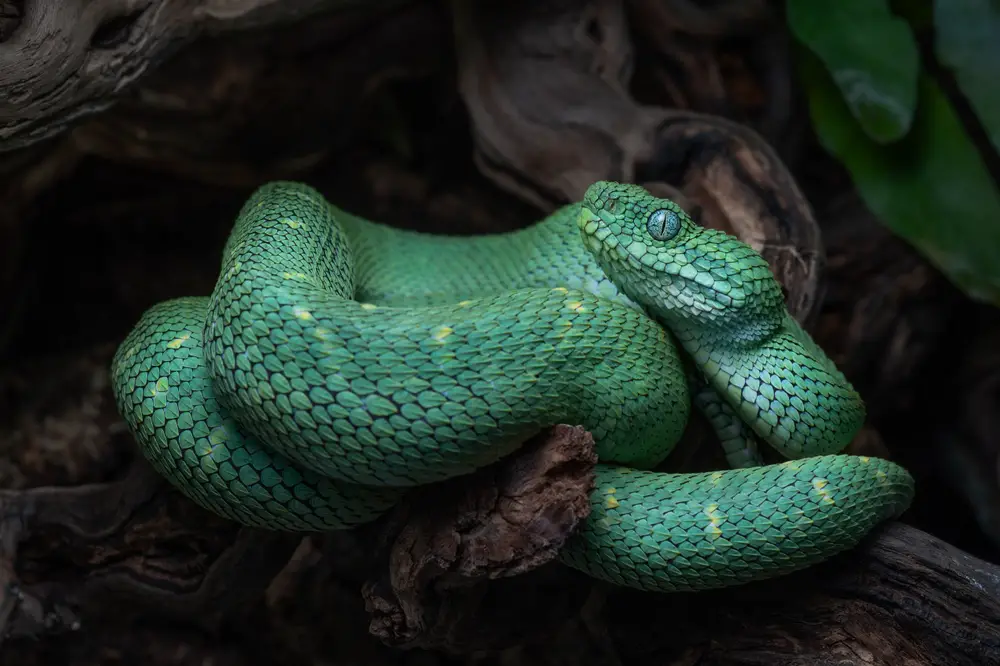
The Bush Viper, also known as the Atheris, is a testament to the beauty of venomous snakes. This snake, found in the rainforests of Africa, is adorned with rough, keeled scales that create a unique textured appearance. Its vibrant colors range from emerald green to yellow and blue, making it one of the most beautiful snakes in its habitat. The Bush Viper’s beauty is not just skin-deep; its arboreal lifestyle is a marvel in itself, as it glides through the trees with grace and agility.
Despite its enchanting appearance, the Bush Viper is not to be underestimated. It carries a potent venom that can be dangerous to humans, although bites are rare due to its reclusive nature. This snake’s elusive behavior adds to its mystique, as sightings are rare and often fleeting. The Bush Viper is a reminder of the hidden wonders of the rainforest and the perfect blend of beauty and danger.
6. The Colorful Eastern Diamondback Rattlesnake
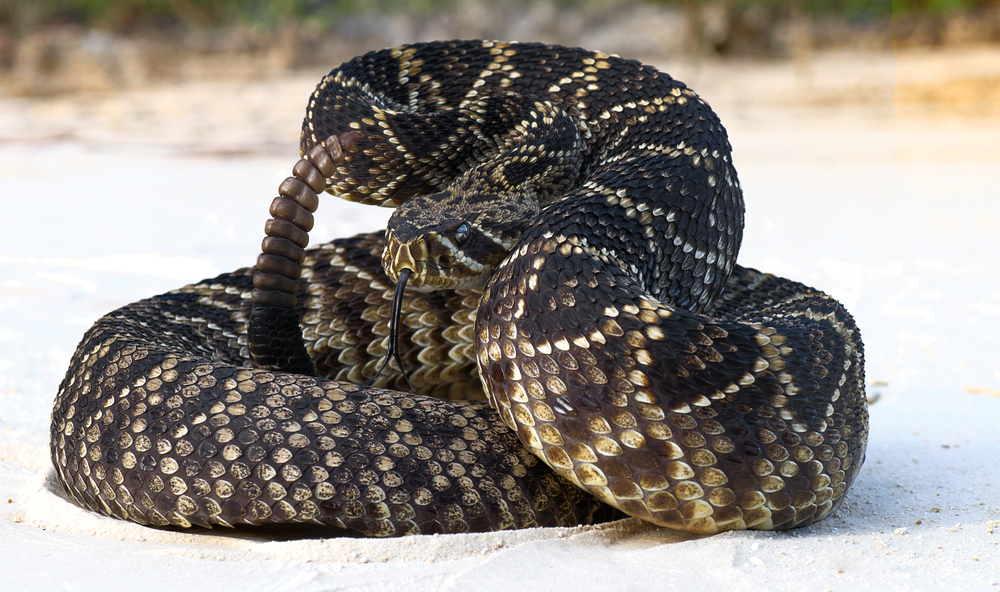
The Eastern Diamondback Rattlesnake, native to the southeastern United States, is a striking example of nature’s artistry. Its scales are adorned with a pattern of dark diamonds outlined in cream, creating a mesmerizing contrast. This snake is not only beautiful but also holds the title of the heaviest venomous snake in North America. Its rattle, a distinctive feature, serves as a warning to potential threats, adding an auditory element to its visual appeal.
The Eastern Diamondback’s beauty and strength make it a formidable presence in its natural habitat. It prefers the dry, sandy areas of pine forests and coastal dunes, where its pattern provides excellent camouflage. While the rattlesnake is capable of delivering a lethal bite, it is generally shy and will avoid confrontation if given the opportunity. Admiring this snake in the wild offers a glimpse into the delicate balance of ecosystems and the captivating beauty of its inhabitants.
7. The Vibrant Black Mamba
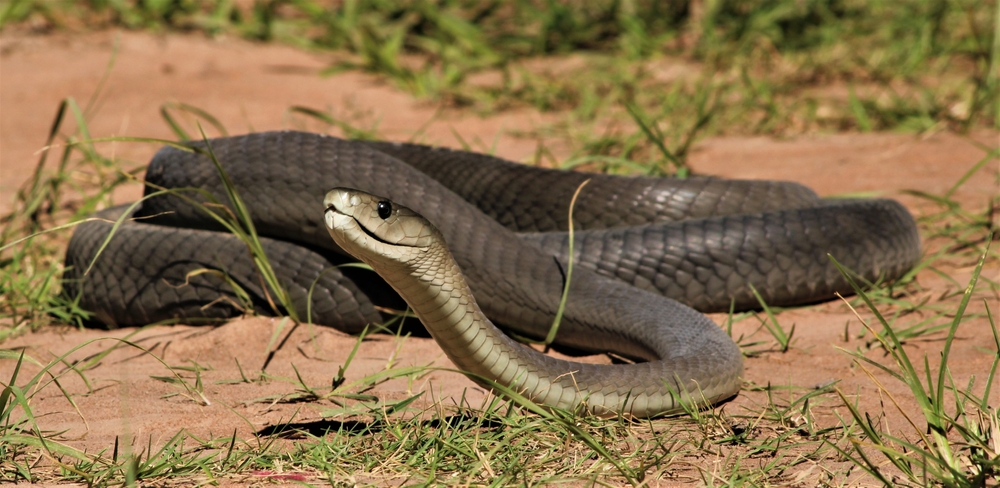
The Black Mamba, despite its name, is not truly black. Its scales are actually a muted olive or gray, but its mouth, when agape, reveals a deep, inky black—a warning to those who threaten it. Known as one of the fastest and most venomous snakes in the world, the Black Mamba is both feared and respected. Its sleek body and swift movements create a graceful spectacle in the African savannas it calls home.
This snake’s beauty lies in its elegance and efficiency, as it glides through its environment with unparalleled speed and precision. The Black Mamba’s venom is a potent cocktail of neurotoxins, making it one of the most dangerous snakes to encounter. However, it is also a master of avoidance, preferring to retreat rather than engage. Observing a Black Mamba in its natural setting offers a thrilling glimpse into the raw power and beauty of one of nature’s most efficient predators.
8. The Enchanting Boomslang
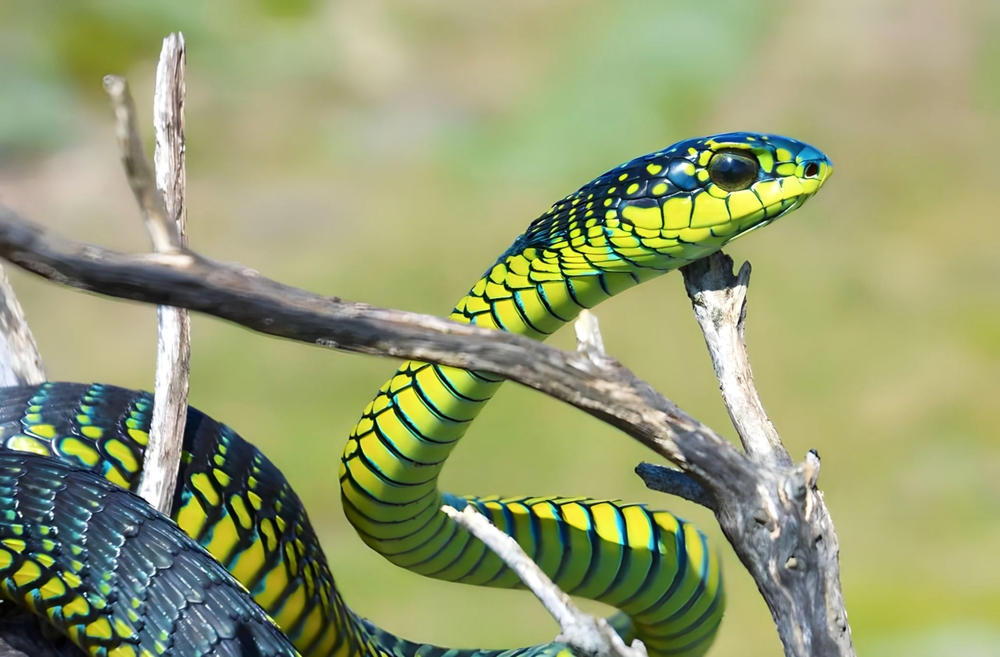
The Boomslang, with its enchanting emerald green color, is a tree-dwelling snake native to sub-Saharan Africa. Its large, expressive eyes and elongated body make it a captivating sight among the branches. The Boomslang is known for its potent hemotoxic venom, which can cause severe bleeding, but it is generally shy and non-aggressive. Its beauty and grace in the trees make it a favorite among snake enthusiasts who appreciate its unique characteristics.
This snake spends much of its time in trees, where its coloration provides excellent camouflage. Its arboreal lifestyle is a wonder to witness, as it moves effortlessly among branches in search of prey. The Boomslang’s combination of beauty and deadly potential highlights the complex dynamics of the natural world. Observing this snake in its habitat is a reminder of the diverse and delicate ecosystems that thrive with such fascinating inhabitants.
9. The Stunning Copperhead
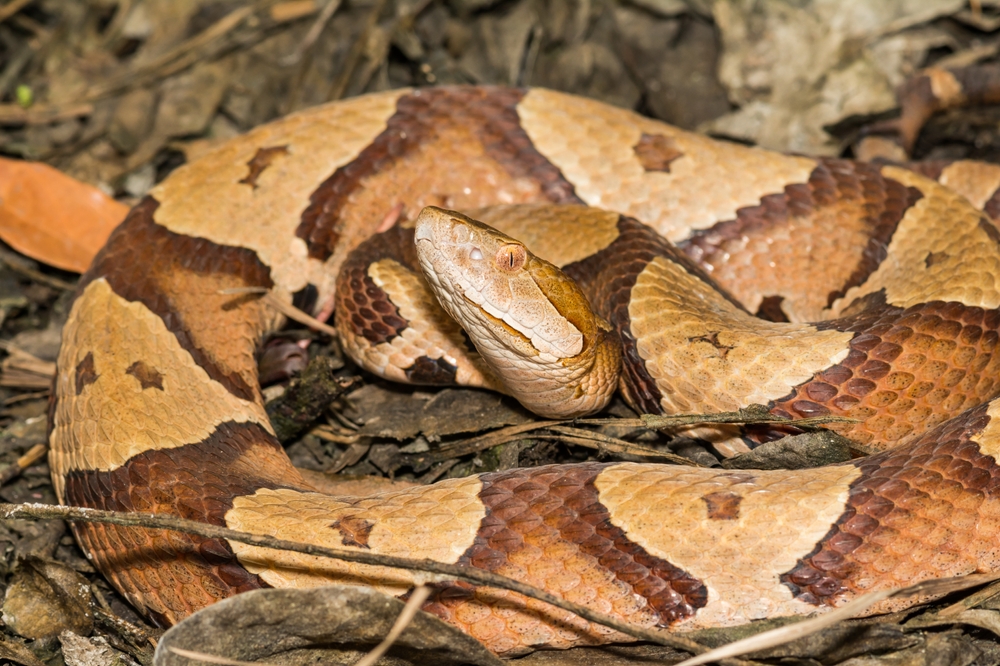
The Copperhead, with its distinctive copper-red head and hourglass pattern on its body, is a familiar sight in North America’s woodlands. Its beautiful colors help it blend into the leaf litter, providing excellent camouflage from both prey and predators. This snake’s venom is among the least potent of pit vipers, but its bite can still be painful and requires medical attention. The Copperhead’s calm demeanor and striking appearance make it a fascinating subject for those interested in the beauty of venomous snakes.
The Copperhead is most commonly encountered by hikers and outdoor enthusiasts, as it prefers wooded areas and rocky hillsides. Its beauty and relatively mild temperament have made it one of the more approachable venomous snakes for observation. However, its ability to remain motionless and blend into its surroundings can make it easy to overlook. Appreciating the Copperhead in its natural environment offers insight into the subtle beauty and complexity of the ecosystems it inhabits.
10. The Spectacular Speckled Rattlesnake
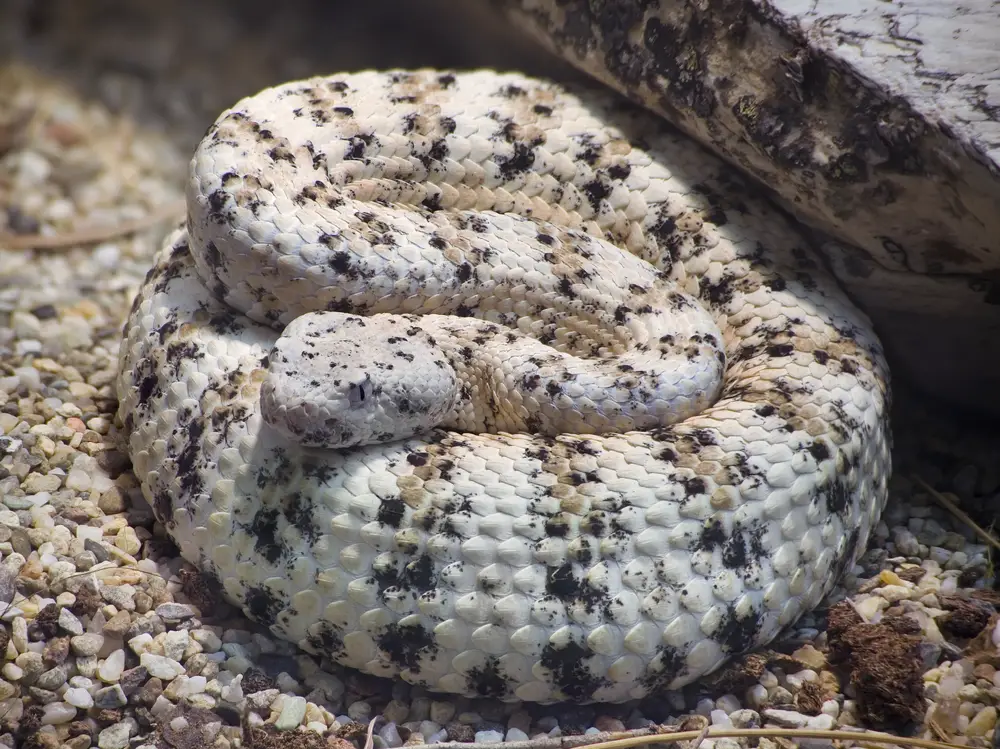
The Speckled Rattlesnake is aptly named for its stunning pattern of speckles and spots that blend seamlessly with its desert surroundings. Found in the arid regions of the southwestern United States, this snake’s coloration varies from pale pink to gray, reflecting the hues of the rocky landscapes it inhabits. Its rattle and striking appearance make it both beautiful and intimidating, a true marvel of adaptation.
This snake’s beauty is enhanced by its ability to thrive in harsh environments where few creatures can survive. The Speckled Rattlesnake’s quiet presence belies its potential for danger, as it possesses a potent venom that can incapacitate prey with ease. Observing this snake in its natural setting highlights the incredible diversity of life adapted to desert conditions. The Speckled Rattlesnake is a testament to the resilience and beauty of wildlife in some of the planet’s most challenging habitats.
